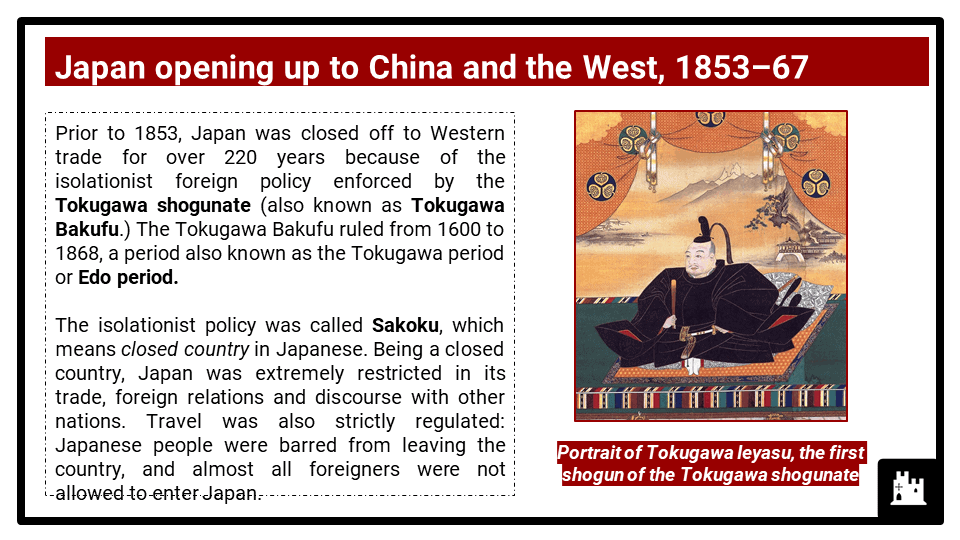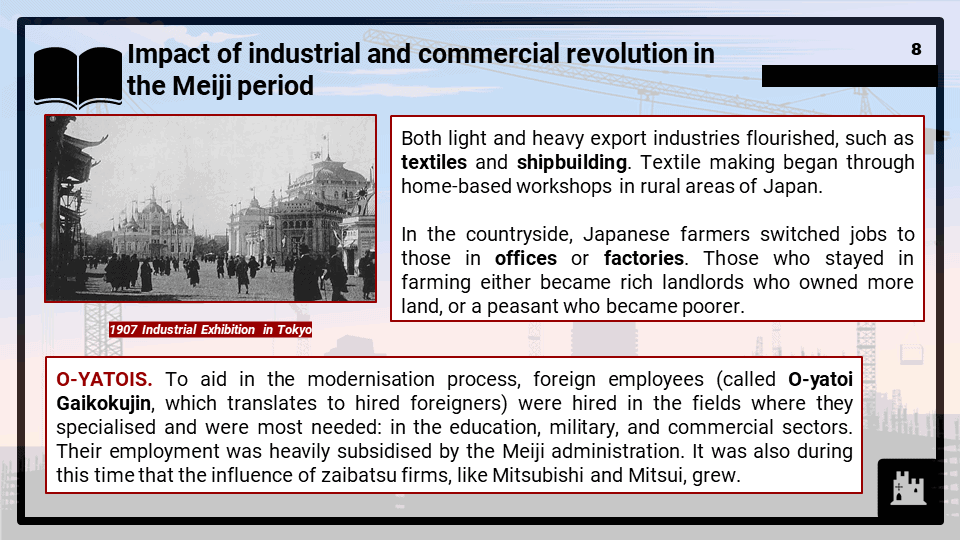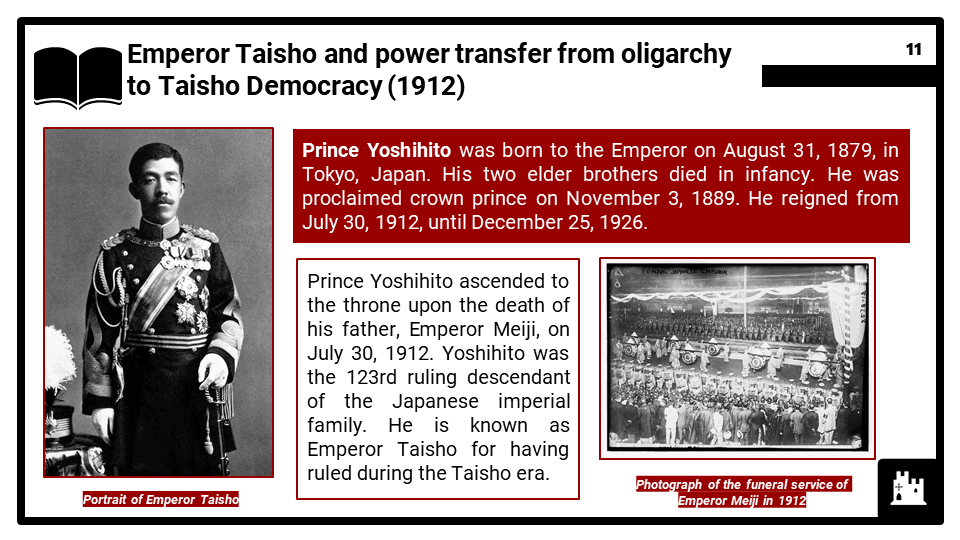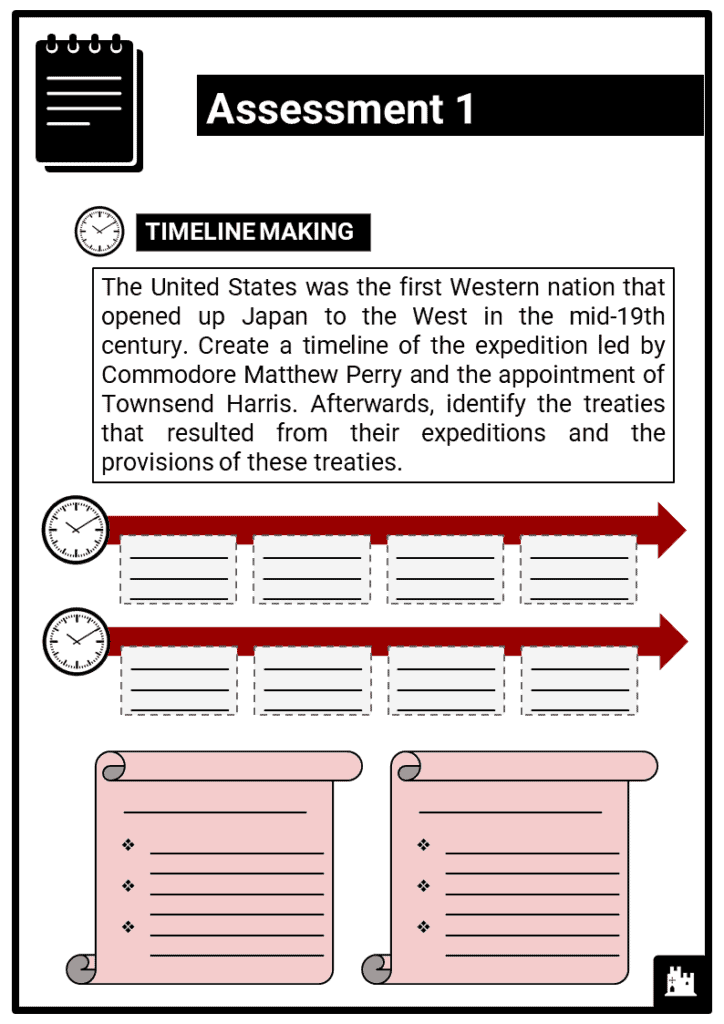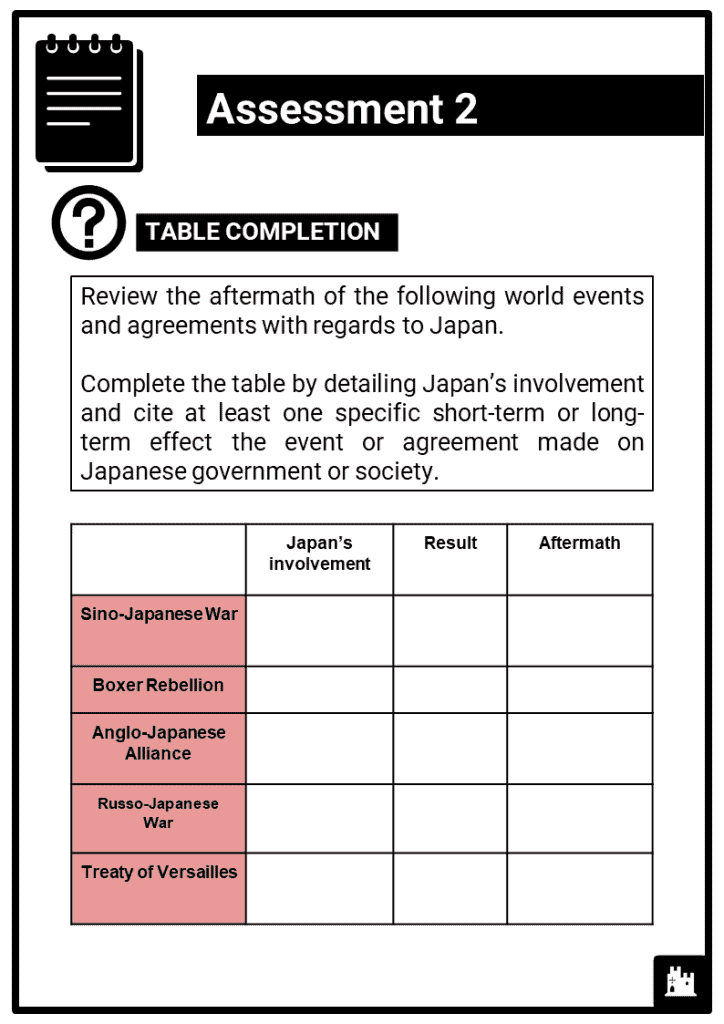Teach any Edexcel IGCSE module B3: Japan in transformation, 1853–1945, no prep needed!
Do you want to save dozens of hours in time? Get your evenings and weekends back? Be fully prepared to teach any Edexcel iGCSE topic B3?
Every Edexcel iGCSE topic B3 is covered, and each module comes complete with:
Paper 2: Breadth Studies, Japan in transformation, 1853-1945
What students need to learn:
- Japan opening up to China and the West, 1853–67
- The Perry Mission – experiencing the West, opening the ports – the political, economic and social effects. Causes of the fall of the Tokugawa – corruption and incompetence within the government; the ‘other’ Japanese – Choshu and Satsuma.
- Transformation, 1867–1895
- Impact on economy and society of the fall of the Tokugawa. Political modernisation as represented in the Meiji Constitution. The impact of the Cultural Revolution and the breakup of the Restoration Coalition (1873). Meiji culture – civilisation, Enlightenment and relations with Christianity.
- An emerging power, 1895–1919
- Impact of industrial and commercial revolution in the Meiji period. Emperor Taisho and power transfer from oligarchy to Taisho Democracy (1912). Changes in Taisho culture and society for Taisho Youth, women, village and urban cultures. Relations with China and the West, including the advance of Japanese influence and possessions in Korea and China following the Sino-Japanese War (1895), Boxer Rebellion (1900), Russo-Japanese War (1904–05), Anglo-Japanese Alliance (1902) and the Treaty of Versailles (1919).
- Political and economic challenges, 1919–31
- Political conflicts, including the struggle over universal suffrage, an emerging labour movement and the Public Security Preservation Law (1925). Economic decline in the 1920s: the impact of The Great Kanto Earthquake of 1923 and the effects on society, trade and industry of world Depression from 1929.
- Depression, empire and collapse, 1931–45
- Political and social effects of Tenko (rejecting communism). The causes and political effects of a return to military dictatorship in the 1930s. Strained relations with the West and especially the USA; the Great East Asia Co-Prosperity Sphere, including Manchukuo (1931) and relations with the League of Nations. The effects on people at home and in occupied countries of Konoe’s New Order during the War in Southeast Asia (1937–45). The effects of Hiroshima and Nagasaki, including the surrender of the Showa Emperor.

